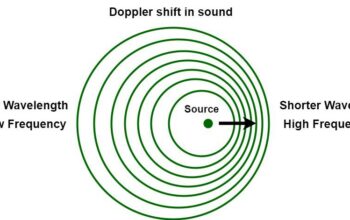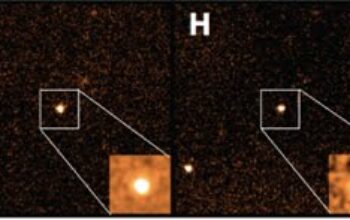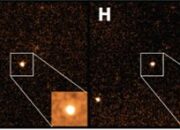Quantum computing, an exhilarating frontier in the realm of technology and physics, has wrought transformative possibilities across various scientific disciplines. The profound nuances of quantum mechanics, which undergird this burgeoning field, pave the way for computational paradigms that may eventually transcend conventional capabilities. As we embark on an exploration of the development status of quantum computing, we will examine its core principles, the current state of research, technological advancements, prevailing challenges, market implications, and future trajectories.
At its essence, quantum computing harnesses the peculiar characteristics of quantum bits, or qubits, which differ fundamentally from classical bits. While classical bits exist in a binary state of either 0 or 1, qubits can embody superpositions of both states simultaneously due to the phenomenon of quantum superposition. Moreover, qubits are interconnected through entanglement, a relationship that enables them to exhibit correlations beyond classical limits. These capabilities substantiate the promise of quantum algorithms that could exponentially accelerate certain problem-solving processes, from cryptography to drug discovery.
Currently, the landscape of quantum computing is defined by various architectures, each with distinct operational mechanisms. Key contenders include superconducting qubits, trapped ions, and topological qubits. Superconducting qubits, exemplified by systems developed by companies like IBM and Google, exploit superconductivity to produce qubits with relatively long coherence times. Meanwhile, trapped ions utilize electromagnetic fields to isolate ions, rendering them amenable to quantum manipulation. Additionally, topological qubits, still largely theoretical, hold the potential to provide inherent error resistance through braiding of quasi-particles.
The race to enhance quantum hardware has witnessed a plethora of advancements. An illustrative triumph is the attainment of quantum supremacy, a term popularized following Google’s 2019 achievement, which demonstrated a quantum processor executing computations unattainable by classical supercomputers. Subsequent innovations have sought to increase qubit count and fidelity—the latter referring to the likelihood that a qubit remains in its desired state throughout computations. Despite these strides, achieving a practical quantum computer remains a formidable challenge.
Dynamic progress continues in the realm of quantum algorithms, which are specifically designed to exploit quantum properties for computational efficiency. Noteworthy algorithms include Shor’s algorithm for integer factorization, which threatens classical encryption schemes, and Grover’s algorithm, offering quadratic speedup for unstructured search problems. The applicability of these algorithms underscores the versatility of quantum computing but also illuminates the exigent need for robust error correction schemes. Quantum error correction is paramount, as qubits are intrinsically prone to decoherence induced by their environments, leading to potential computational errors.
The development of quantum software platforms and programming languages signifies a critical component of the quantum ecosystem. Technologies such as Qiskit, developed by IBM, and Cirq, introduced by Google, empower researchers and developers to navigate the complexities of quantum programming. These platforms facilitate the design and simulation of quantum circuits, making the quantum computing paradigm more accessible. Furthermore, hybrid approaches that integrate classical and quantum computing are emerging, enabling immediate applications while the quest for fully functional quantum systems continues.
Current research in quantum computing is not limited to technological advancements; it also explores fundamental scientific principles that govern quantum interactions. Scholars probe questions regarding the scalability of quantum systems, developments in quantum networking, and the intersection of quantum mechanics with artificial intelligence. Such inquiries not only advance our understanding of quantum phenomena but also elucidate the potential implications of quantum technologies across diverse sectors, including finance, healthcare, and materials science.
From a market perspective, venture capitalists and firms are increasingly investing in quantum startups, envisaging lucrative opportunities stemming from quantum advancements. Notable players include Rigetti Computing, IonQ, and D-Wave, each contributing unique innovations. As industries strive to harness quantum capabilities, collaborations between academia and industry are becoming increasingly vital. Joint research initiatives are anticipated to expedite breakthroughs that promise to refine quantum master algorithms or yield novel applications.
Nevertheless, the quantum computing domain grapples with significant hurdles. Technical challenges associated with qubit coherence times, error rates, and system scalability necessitate ongoing research and development. Moreover, ethical considerations arise concerning the capabilities that quantum computing may bestow upon those who wield it. The potential for quantum-enhanced cyber attacks poses threats to information security, eliciting calls for preemptive measures to safeguard against such vulnerabilities.
As we contemplate the outlook for quantum computing, a multitude of future trajectories emerge. Advancements in hardware are poised to flourish, potentially yielding devices with thousands of qubits capable of performing intricate calculations. Moreover, the maturation of quantum networks could foster unprecedented levels of communication security and computational power through distributed quantum systems. International collaboration is expected to burgeon as nations recognize the strategic implications of quantum supremacy.
In conclusion, the development of quantum computing is both exhilarating and exigent, intertwining advanced computation, profound scientific inquiries, and emerging market dynamics. The confluence of academic exploration and technological innovation presents a tantalizing vista for the future. As researchers and practitioners continue to unravel the complexities of this realm, the possibility of ushering in a new era of computing looms ever closer, holding profound implications for society and scientific inquiry at large.










